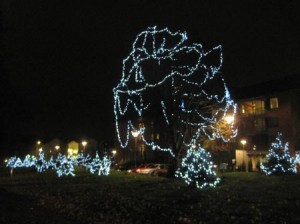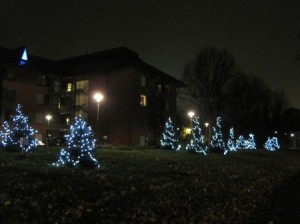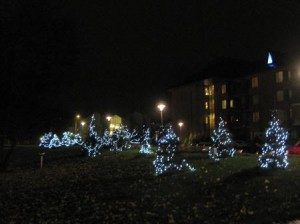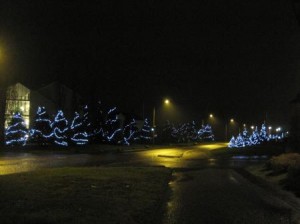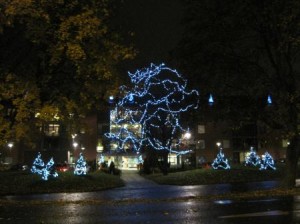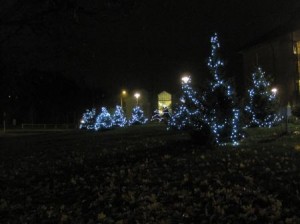Winter is coming! And in this blog post, I just want to list some hints for that which have come to my mind. Feel free to comment and give me more ideas!
- Last weekend summer time ended, so now we are back in the Eastern European Time (EET) which is the Coordinated Universal Time +2 hours. Of course, one can discuss about the sense of the summer time. And this year, Belarus and Russia abolished winter time, Anyway, this is hint #1 for winter.
- Now when I started this blog it was 17:15 EET and already dark as night!
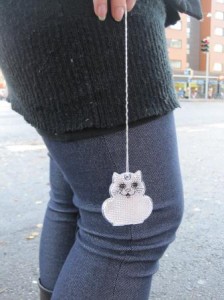 That leads us directly to hint number three. Reflectors is the key word! You might be confused when you see people walking around with them, but believe it or not, according to §42 of the Finnish Road Security Act (Jan 1, 2003) it is even illegal to not have such a reflector: »pedestrians traveling roads after dark must generally wear an appropriate reflector«. Some people claim that the Finns have even invited them. However, these days you find reflectors in every form and colour. Simply round ones as well as Momins and everything else that you ever dreamt of! But there are many people who do not use reflectors, so the authorities try a lot to change that. For example, there are a Reflector Guide and an information sheet giving background and usage information.
That leads us directly to hint number three. Reflectors is the key word! You might be confused when you see people walking around with them, but believe it or not, according to §42 of the Finnish Road Security Act (Jan 1, 2003) it is even illegal to not have such a reflector: »pedestrians traveling roads after dark must generally wear an appropriate reflector«. Some people claim that the Finns have even invited them. However, these days you find reflectors in every form and colour. Simply round ones as well as Momins and everything else that you ever dreamt of! But there are many people who do not use reflectors, so the authorities try a lot to change that. For example, there are a Reflector Guide and an information sheet giving background and usage information.- Furthermore, there are special winter speed limits since last week. Mainly, the speed limit on highways is reduced from 120 km/h to 100 km/h and from 100 km/h to 80 km/h on other main roads. These changes are valid until March or April, depending on the weather then.
- More about cars and traffic: Of course, some are driving already with winter tyres. You can really hear the spikes!
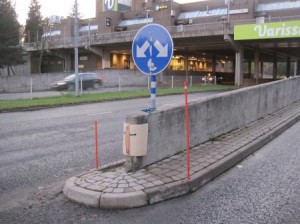 And one last thing about traffic: Even if so far no snowflake has been seen here in Turku, you find those sticks everywhere that show where the curb is. In Germany they come out only in real strong winters, I guess. But here it’s normal to have them.
And one last thing about traffic: Even if so far no snowflake has been seen here in Turku, you find those sticks everywhere that show where the curb is. In Germany they come out only in real strong winters, I guess. But here it’s normal to have them.- What else? Oh yes, some public bins had been removed, for example at the Aura river.
- Something about beer: It is really amazing, how many beers there are! And these days, you will find a lot of Winter or Christmas beers, as well as ciders. The same goes of course for chocolate! And I love Fazer’s Joulusukla!
- But the most beautiful sign for the upcoming winter is (only as long as there is no snow, of course) that there are already hundreds of Christmas lights, at least where I took these photos (it’s at the Saga senior residence, Vähäheikkiläntie 1 [map], just in case you wonder)!

